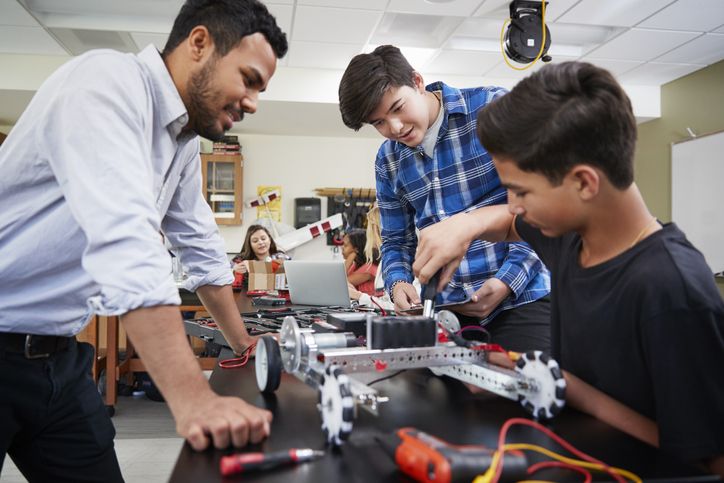Motivating Reluctant STEAM Learners: Changing how you assess can inspire students

In the Innovation Lab, my makerspace for 4th and 5th graders, I see students once a week for the entire school year. To help students focus on the process of creation and iteration, I changed the way I assess their work.
First, I assess students on their use of our design process rather than being graded on final products. I also got rid of due dates. Students can work on their products until they think they are done. The downside to this process is that students take longer to finish projects. To help motivate students to work through our design process but still finish their projects in a timely fashion, I use the following tricks:
Have a Mantra: “Done is better than perfect” is the mantra of the Innovation Lab. I say it all the time. Now my kids say it, too. It is our way of saying that what we do in the Innovation Lab is a process. We hurry up to get our products done so we can start our design process over again and make our products even better. By embracing the “done is better than perfect” mentality, I’m giving students permission to iterate. I am letting them know their first effort is not the only effort they’ll be graded on because they can repeat our design process over and over again until they are happy with the results. By removing the stigma of perfection, my students are inspired to create again and again.
Collect Digital Evidence: I require students to capture digital evidence like pictures and videos as they work in the Innovation Lab. Collecting digital evidence as they work through each stage of our design process helps students to think and reflect on what they were doing, how they were doing it, and how far they’ve come. Digital evidence helps students stay present and focused as they work through a design.
Use Checkpoints: There’s a recording studio in the Innovation Lab. As you can imagine, it is a popular destination for many students. To keep things orderly, and to help students move forward in a design, students must complete certain checkpoints before they can use the recording studio. Whether making a podcast or a video, students can’t enter the recording studio without having a script or storyboard. When creating music, students must have arranged it before they are allowed to record. Just like a more traditional class uses scaffolding to break learning objectives into more manageable chunks, instituting a checkpoint system as a means to guide students through their design process in a makerspace is a great way to keep students moving forward toward a final product while keeping focus on the process.
Push Work to a Larger Audience: Pushing student work to a larger audience can be motivating. Students often will never work harder than if they know the whole world might see their creations. This is one way that social media can be a game changer in the classroom. I use social media in the Lab to capture the great things students are making. Students are excited to see their efforts pop-up on the class Instagram feed. Students love to know how many views they have, and often start to speak directly to their “fans” by dictating what I write in the captions. Pushing student work to a larger audience through social media can be a big motivator for students.
By changing the way you assess student work, you can motivate even reluctant learners to succeed.
Tech & Learning Newsletter
Tools and ideas to transform education. Sign up below.
Chris Aviles is a teacher at Knollwood middle school in the Fair Haven school district in Fair Haven, New Jersey. There he runs the Fair Haven Innovates program he created in 2015. Read more with Chris’s work on his blog TechedUpTeacher.com.











